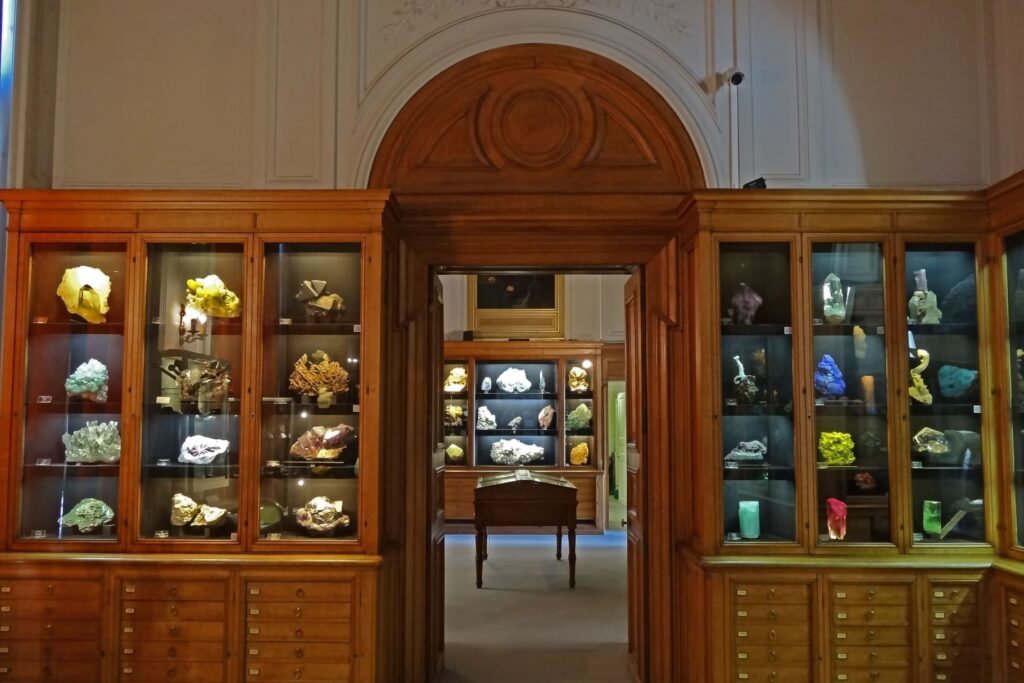Museum of Mineralogy
Heir to the great collections of the École des Mines, the Mineralogy Museum houses thousands of rare samples, from meteorites to royal gems, and is today a living place of transmission, research and creation.

Description
The Staircase and Museum are spaces rich in history and culture. The monumental staircase is adorned with oil paintings on marouflaged canvas, produced between 1852 and 1859, commissioned by Armand Dufrénoy, the school’s director at the time. These works illustrate the School’s original missions and areas of teaching.
The museum’s pediment is decorated with symbols such as oak and laurel leaves, representing the State, and the École’s weapons: a hammer for fixing wood in mine walls and a hammer for testing stones.
These symbols embody the School’s mission, which is to train mining engineers for the French state. Founded in 1794, the museum is the heir to the collections of the École Royale des Mines and houses a collection of 100,000 samples, 4,000 of which are on display. Renowned for its geodiversity, it is one of the world’s leading museums of mineralogy. Its treasures include a historic collection of meteorites and gems, including the Crown Jewels.
Today, the museum plays an essential educational and cultural role, supporting teaching and research.
It is also a means of scientific and cultural mediation, hosting artists in residence and organising exhibitions linking art and science under the motto ‘beautiful and useful’. This unique blend of scientific, educational and artistic heritage makes the museum a place of inspiration for everyone.


Reservation of museum spaces subject to conditions.
For further information, please contact the museum team.

